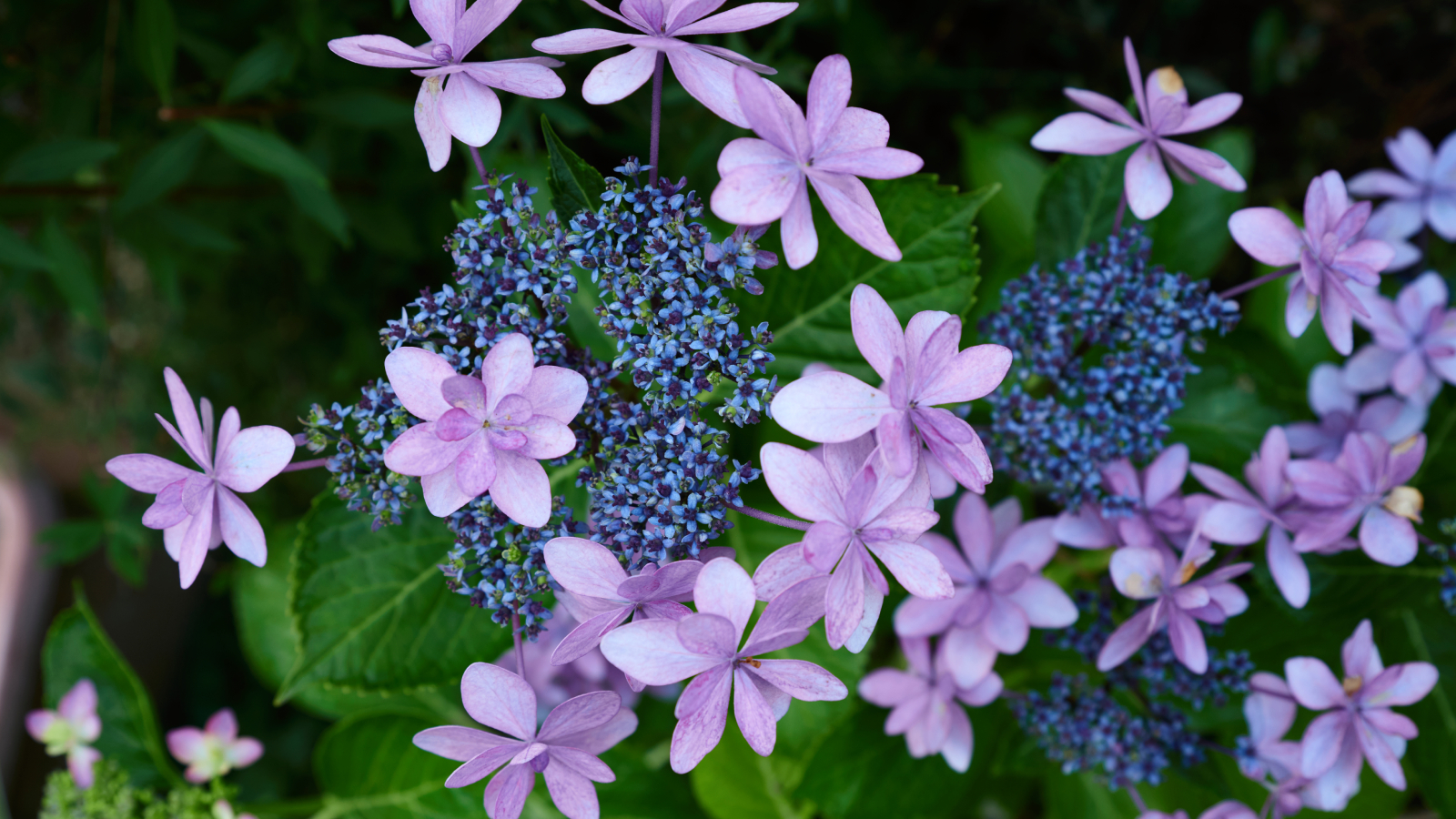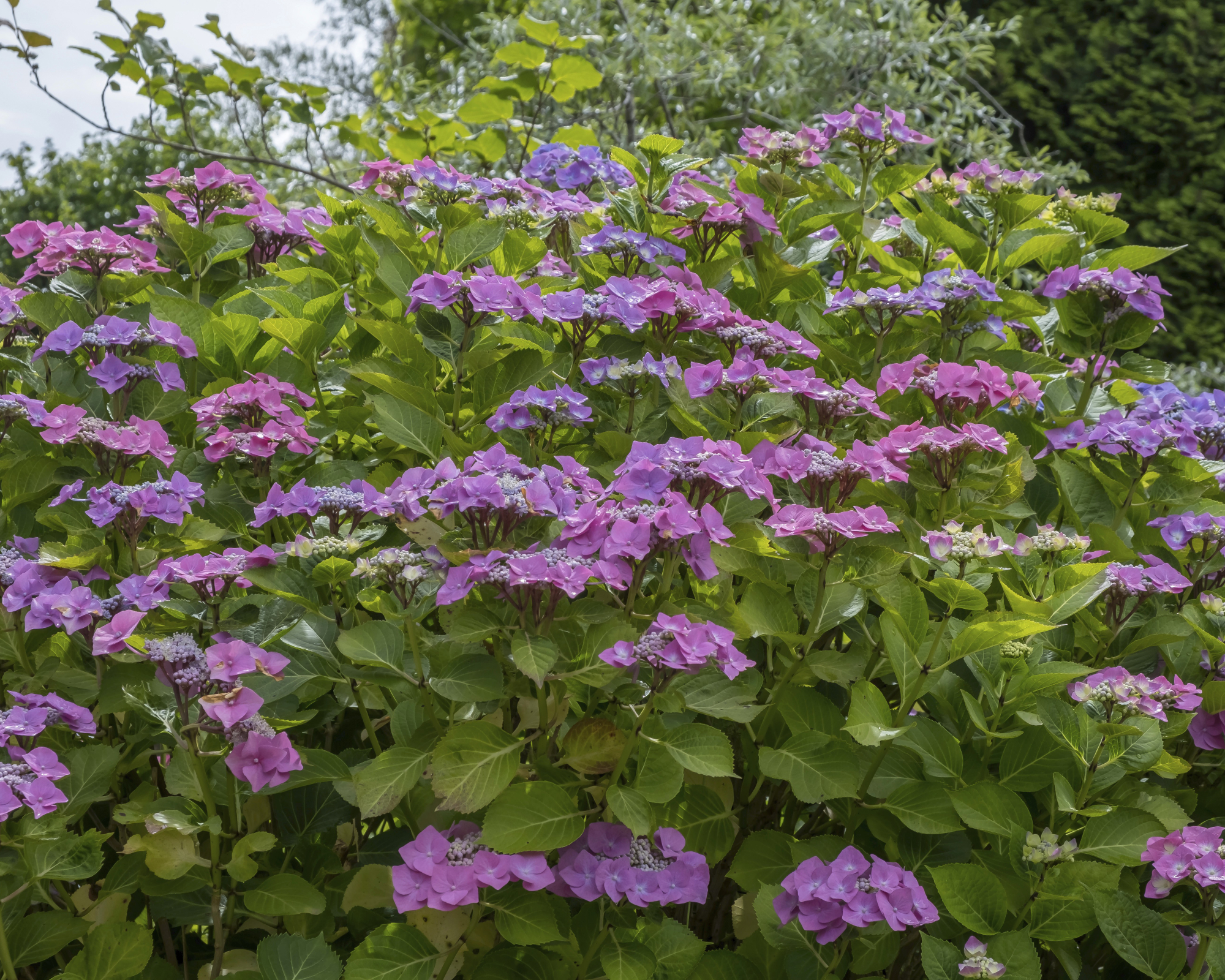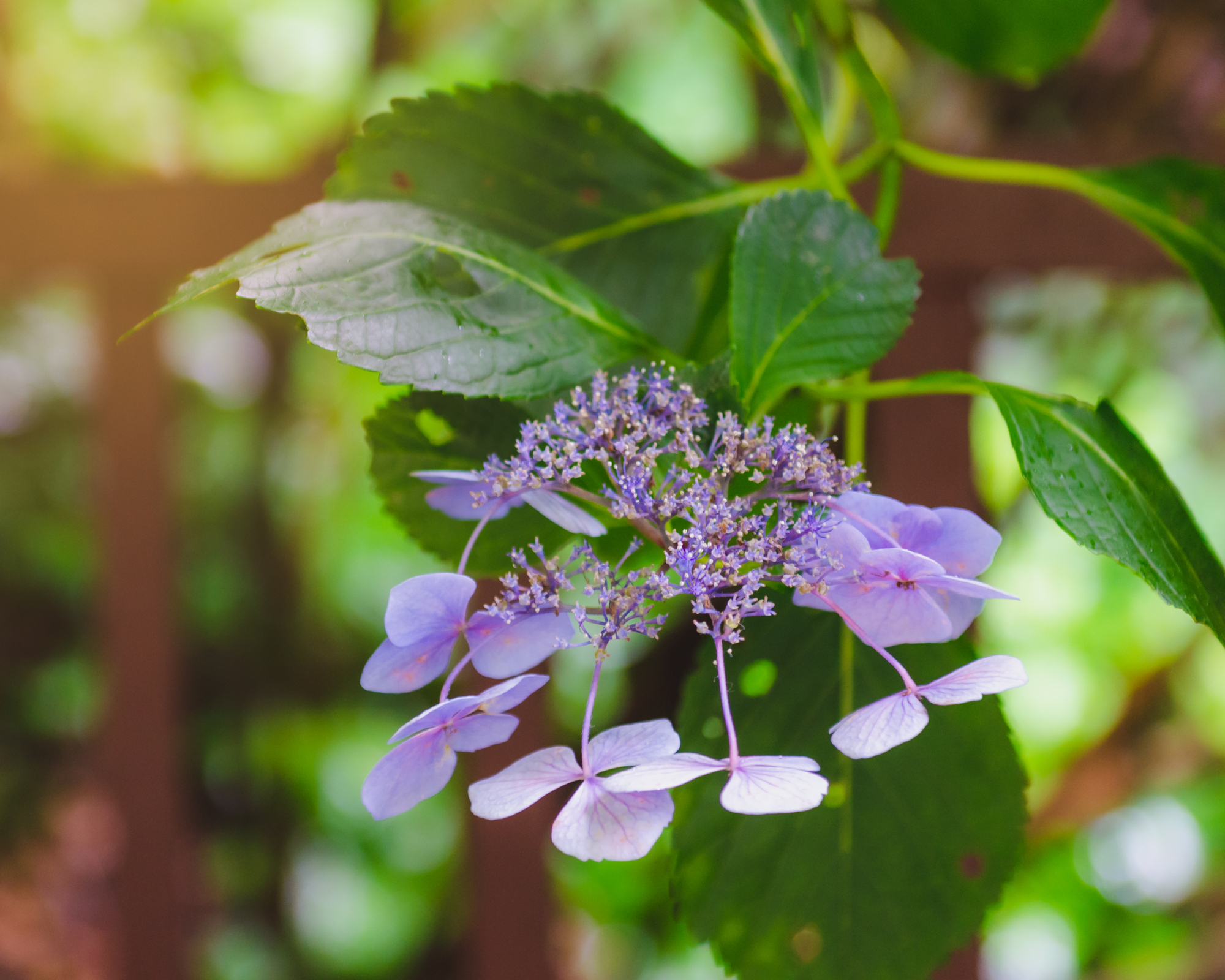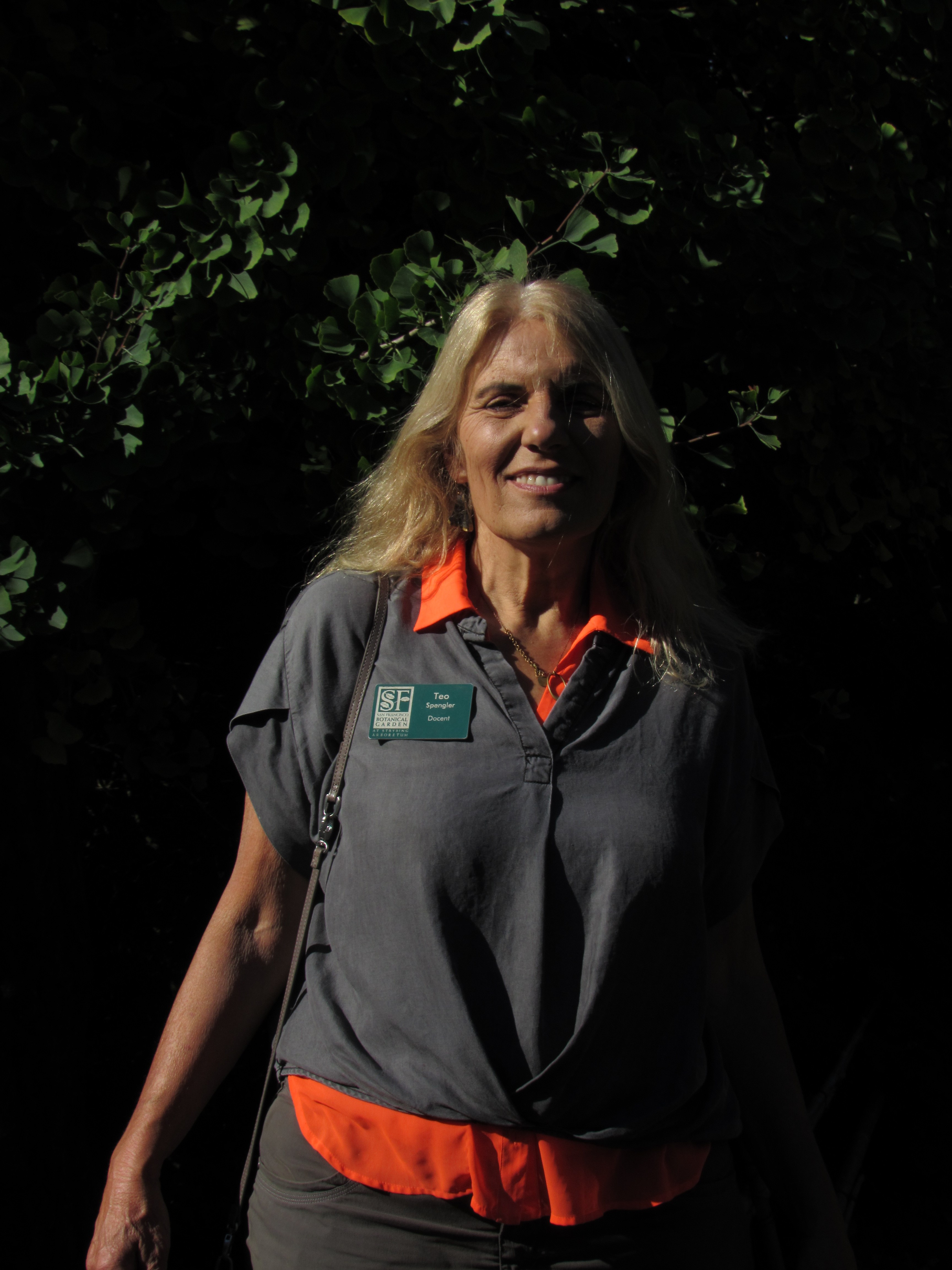How To Grow A Mountain Hydrangea – The Underused Shrub With Wonderfully Whimsical Blooms
Mountain hydrangeas are a beautiful, compact variety that is sure to stun. Learn all about these vibrant shrubs and how you can grow one in your garden.


Quick Facts
Botanical name: Hydrangea serrata
Height: 2 – 4 feet (.6 – 1.3m),
Spread: 2 – 4 feet (.6 – 1.3m)
Sun exposure: Full sun or partial sun
Soil requirements: Excellent drainage
Hardiness zones: USDA plant hardiness zones 6-9
When to plant: Spring or fall
Mountain hydrangea plants are smaller, more compact versions of the popular bigleaf hydrangea and they are definitely worth a second look. Their lush green foliage is more slender than that of bigleaf, but, like bigleaf, their flowers turn blue or pink depending on the acidity of the soil.
Native to regions of Japan and Korea, Hydrangea serrata is often referred to as mountain hydrangea. This variety of hydrangea, which frequently includes various cultivars of lacecap hydrangeas, is prized for its ornamental beauty and unique flower clusters.
Blooms range in color from blue to pinkish red, depending upon soil pH, and feature a flattened cluster of flowers.
Mountain Hydrangea Care
When growing mountain hydrangea you’ll first need to consider the specific needs of the plant. Your planting site should receive ample sunlight, but will benefit from partial afternoon shade. Hydrangeas will also need well draining soil and sufficient space as the plant grows and reaches maturity.
Light

Most varieties of hydrangea are tolerant of different sun exposures. Mountain hydrangea will accept full sun, but prefers a spot with dappled sun or partial shade. In warmer zones, the ideal is morning sun and afternoon shade. You will need to water more often if planting them in a full sun location.
Water
While mountain hydrangea is tolerant of different sun exposures, it is picky about water. If you water too much, root rot (and sometimes fungal diseases) can result. If you water the hydrangea too little and let the soil dry out, the plant is likely to die. The key is to water regularly but not too much each time. If the top four inches of soil are wet, it’s time to water well without flooding.
Temperature & Humidity
Mountain hydrangeas thrive in USDA hardiness zones 6-9, so it doesn’t accept temperatures that are too hot or too cold. And humidity is not a friend for this hydrangea. It causes fungal diseases.
Sign up for the Gardening Know How newsletter today and receive a free copy of our e-book "How to Grow Delicious Tomatoes".
Soil

Most hydrangea species need excellent drainage to thrive. The best soil contains organic matter and holds moisture. You can maintain fertility by using organic compost as mulch at the base of the shrubs. The Reencle home composter from the Gardening Know How Shop is an efficient and odor-free way to turn your kitchen scraps into nutrient-rich compost.
What about soil pH? Well, mountain hydrangea doesn’t require either acidic or alkaline soil to thrive, but it is sensitive to the issue. Soil pH impacts flower color. Like bigleaf hydrangeas, hardy mountain hydrangeas produce blue flowers in acidic soils. The less acidic the soil, the pinker the blooms.
Fertilizer
I am a fan of providing nutrition to plants by amending the soil with organic compost. But if you are someone who likes using fertilizer, use a balanced fertilizer in early spring. Either one or both together will boost growth and healthy bloom production. Don’t go heavy on nitrogen fertilizer; you will get lush foliage but few flowers.
Problems, Pests & Diseases
Mountain hydrangeas are tough plants. While they can attract regular garden pests like aphids, they aren’t insect-pest magnets or particularly disease prone. Note that improper cultural care will cause problems. For example, excess humidity results in fungal diseases, while too much direct sun dries out the soil quickly and can result in foliage wilt and even death. Too much fertilizer causes yellowing leaves and browning leaves.
Pruning

Pruning hydrangeas can be tricky since some species set buds on old wood and should be pruned right after flowering; others flower on new wood and can be pruned through early spring. Older cultivars of mountain hydrangea bloom on old wood while newer cultivars can bloom on both old and new wood.
Fortunately, these hydrangeas don’t need much pruning. All you need to do in terms of pruning is to cut out dead stems, broken branches and diseased portions of the shrub. Deadhead hydrangeas if you want tidier plants, but it isn’t obligatory. Our gardening experts love the Fiskars bypass pruning shears that can be found on Amazon.
Propagation
The best way to propagate your mountain hydrangeas is by taking and rooting softwood cuttings in early summer. Take cuttings around 6 inches (15 cm) long that have several nodes. Use rooting hormone, then “plant” in potting soil and keep the soil moist until the cutting develops a root system. I like to use Garden Safe TakeRoot hormone that can be found on Amazon.
Repotting
Think of mountain hydrangeas as smaller, more compact versions of bigleaf hydrangeas. Because of the size, they can be grown in containers. When the roots fill up the container, repotting is necessary. Pick a container a size or two bigger than the prior container, add potting soil into the bottom, then move the root ball from the old pot into the new one. Fill in the sides of the container with new soil and water well.
Mountain Hydrangea Varieties

- 'Blue Bird' - This is a compact cultivar that is extremely popular in Europe, where the Royal Horticultural Society of England gave this plant its award of merit in 1960. Blue Bird grows to some 4 feet (1.3m) tall and wide, producing delicate lacecap flowers. There’s another pop of color in autumn when the leaves blaze red before falling.
- 'Tiny Tuff Stuff' - This is a teeny tiny beauty! This compact cultivar only gets to 2 feet (.6m) tall and works well in containers. It produces oodles of lacecap flowers with doubled sepals. Most are blue but the flowers can be delicate shades of blue, pink and white. They mature to a darker pink and arch down. You can find 'Tiny Tuff Stuff' from Proven Winners.
- 'Pink Dynamo' - Pink Dynamo mountain hydrangeas offers pink or purple flowers in mop-head of lacecap clusters. The shrubs grow to 4 feet (1.3m) tall and wide. The vibrant 'Pink Dynamo' can be purchased from the Arbor Day Foundation.
Frequently Asked Questions
Do mountain hydrangeas like sun or shade?
Keep your mountain hydrangeas happy with dappled sun or morning sun and afternoon shade.
Do you cut back mountain hydrangeas in the fall?
Mountain hydrangeas do not need much pruning. After their flowers die, you can cut back those stems to healthy buds. Otherwise, just take out dead or damaged stems in early spring.
What is the difference between mountain and lacecap hydrangeas?
Mountain hydrangeas are sometimes called lacecap hydrangeas. This is because the shrubs usually grow lacecap flowers with central disks of smaller flowers surrounded by showy sterile flowers. However, some cultivars do offer the mophead variety of blooms.

Teo Spengler is a master gardener and a docent at the San Francisco Botanical Garden, where she hosts public tours. She has studied horticulture and written about nature, trees, plants, and gardening for more than two decades, following a career as an attorney and legal writer. Her extended family includes some 30 houseplants and hundreds of outdoor plants, including 250 trees, which are her main passion. Spengler currently splits her life between San Francisco and the French Basque Country, though she was raised in Alaska, giving her experience of gardening in a range of climates.
- Tonya BarnettWriter
- Amy DraissDigital Community Manager